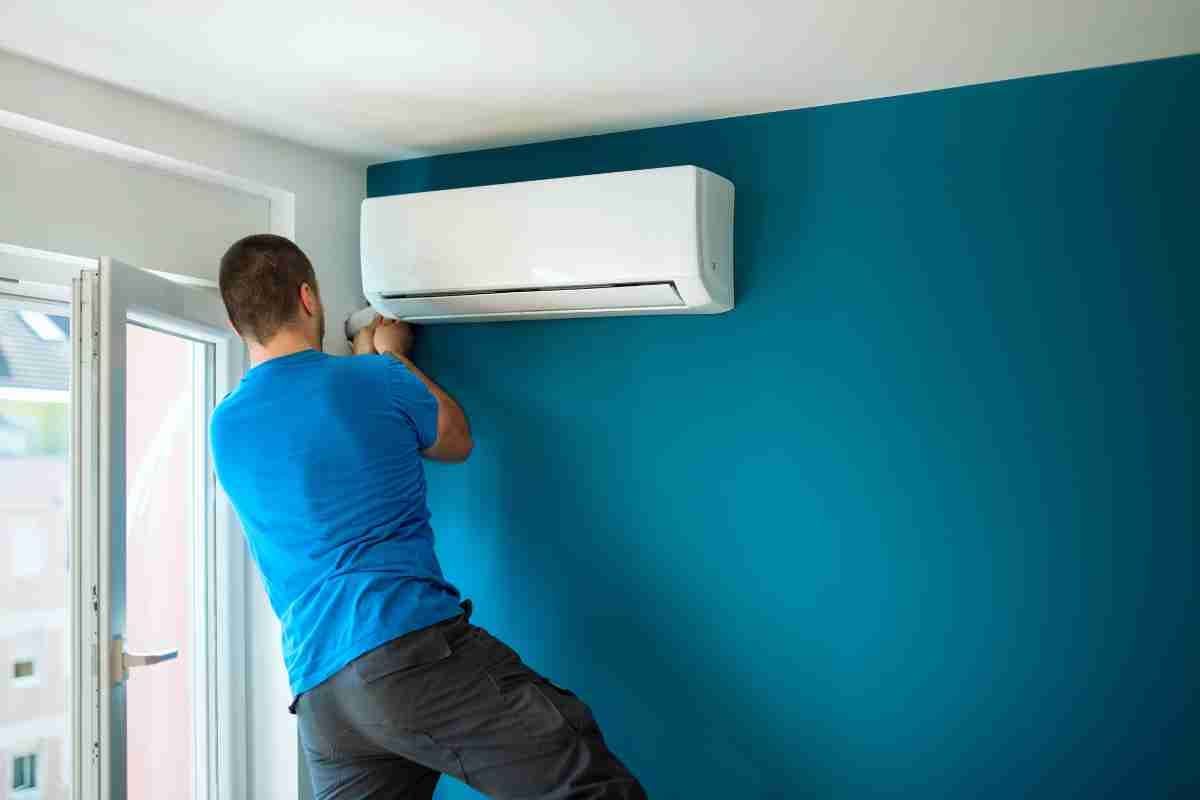How to Prepare Your Home for Air Conditioning Installation
Air conditioning installation is a key investment. With proper planning, you can ensure a smooth, hassle-free process and enjoy comfort year-round. Here's how.

Air conditioning installation is a significant investment that can make your home more comfortable year-round, especially during the hotter months. However, the process can be disruptive if you’re unprepared.
Fortunately, with a little planning, you can help ensure a smooth and hassle-free installation. In this guide, we’ll walk you through how to get your home ready for air conditioning services, so you can enjoy the benefits with minimal inconvenience.
Why Preparing Your Home is Important
Proper preparation not only makes the installation process more efficient but also helps reduce unexpected delays and ensures that the experience is as good as it can be. Installers can complete the job quicker if your home is ready for them and it can also help prevent additional costs associated with last-minute adjustments.
By following these steps, you’ll ensure the installation runs smoothly, and the new air conditioning system functions as efficiently as possible.
1. Clear the Installation Area
Before the technicians arrive, it’s crucial to clear the spaces where the indoor and outdoor units will be installed. This is the first step in making sure the installation team can work effectively without unnecessary distractions or obstacles.
- Indoor Unit: Move furniture and belongings away from walls where the unit will be mounted. Clear at least two meters of space for the technicians to set up ladders and tools.
- Outdoor Unit: Make sure the area where the outdoor condenser will be placed is clear of debris, plants, or any other obstructions. If the location is overgrown or cluttered, trim nearby bushes and clean the ground.
2. Check Electrical Capacity
Air conditioners require a dedicated electrical circuit to function properly. Before installation, it’s essential to ensure that your home’s electrical system can support the new unit.
- Consult Your Installer: Ask the installation team about the electrical requirements for your specific system. If upgrades or changes to the circuit are necessary, make arrangements with an electrician prior to the installation date.
- Breaker Box Check: Ensure your breaker box has enough space for an additional circuit. If not, you may need an electrician to upgrade your electrical panel.
3. Ensure Proper Insulation
One of the best ways to maximise the efficiency of your new air conditioner is by making sure your home is well insulated. Poor insulation can cause your new system to work harder, leading to higher energy bills and reduced efficiency.
- Check Windows and Doors: Inspect your windows and doors for air leaks. Seal any gaps with weatherstripping or caulk to keep cool air inside your home.
- Upgrade Insulation: If you live in an older home, you may want to consider upgrading your insulation in the roof or walls to prevent cool air from escaping.
4. Discuss Placement with Your Installer
The placement of your air conditioning units (both indoor and outdoor) significantly impacts their efficiency. Take the time to discuss potential locations with your installer to ensure optimal performance.
- Indoor Unit Placement: Ideally, the indoor unit should be placed in an area with good air circulation, away from direct sunlight or heat sources like appliances. It should also be positioned centrally to cool the largest space possible.
- Outdoor Unit Placement: The outdoor condenser should be placed in a shaded area if possible, as this helps reduce strain on the system. It’s also important to keep it clear of obstructions that could limit airflow, such as walls or fences.
5. Make Access Easy for Installers
Technicians will need to access different areas of your home, both inside and out, to complete the installation. Ensuring they can easily get to the required locations will speed up the process and prevent unnecessary delays.
- Clear Pathways: Remove any obstacles from doorways, hallways, and stairways that the technicians will use to transport equipment.
- Roof and Crawl Space Access: If the installation involves ductwork, ensure there’s easy access to your attic or roof, crawl space, or other areas where ducts might be routed.
6. Protect Valuables and Fragile Items
The installation process can be noisy and involve drilling, hammering, and moving large equipment. If you have delicate or valuable items near the installation area, it’s best to move them out of the way to prevent accidental damage.
- Cover Furniture: If moving large pieces of furniture isn’t possible, consider covering them with sheets or tarps to protect them from dust and debris.
- Secure Breakables: Remove any fragile items from shelves or walls near the installation area, especially if the unit will be installed overhead.
7. Prepare for Noise and Temporary Disruptions
Air conditioning installation can be noisy, particularly if the technicians need to drill or cut through walls to install ducts. If you work from home or have children or pets, it’s important to plan accordingly.
- Pet Safety: If you have pets, consider relocating them to a quieter area of the house or a friend’s home to reduce stress from the noise and the presence of strangers.
- Temporary Workspace: If you work from home, set up a temporary workspace in a part of the house away from the installation to avoid distractions.
8. Plan for Disposal of Old Units
If you’re replacing an old air conditioner, you’ll need to arrange for its disposal. Most installers will offer this service, but it’s a good idea to confirm the details ahead of time.
- Recycling or Disposal: Some companies will remove and recycle the old unit for you. Ask your installer if this is included in their service or if there are additional fees.
- Environmental Considerations: If your old system uses older refrigerants like R-22, be aware that it needs to be disposed of properly due to environmental regulations. Discuss this with your installer to ensure everything is handled in compliance with the law.
9. Post-Installation Care and Testing
Once the air conditioner is installed, your technician will test the system to make sure it’s working correctly. This is the time to ask questions and ensure everything is set up according to your preferences.
- System Walkthrough: Ask the technician to walk you through how to operate the thermostat, adjust the settings, and perform basic maintenance, like cleaning filters.
- Maintenance Schedule: Inquire about a regular maintenance schedule to keep your system running efficiently. This might include annual inspections and filter changes.
10. Final Thoughts: Enjoy Your Comfort
Preparing for air conditioning installation doesn’t have to be stressful. By following these steps, you’ll make the process smoother for both you and the installation team. Once everything is set up, you can enjoy a cooler, more comfortable home, knowing you’ve taken the right steps to ensure your new air conditioning system works at its best.




Comments ()